Vaping cannabis is the modern alternative to smoking the herb. This particular consumption method involves much less heat — below the point of combustion. The whole process creates a stream of vapor which you then inhale through a mouthpiece of a vaporizer.
Experts, as well as regular consumers, argue that vaping cannabis is better than smoking it because it’s healthier, gives you a more flavorful experience, and packs more punch.
But is really vaping cannabis more potent than smoking a joint?
While it’s not easy to quantify that difference, scientists have investigated the subject and found that vaping, indeed, packs a more juicy punch than the traditional puff-puff-pass.
It may not be as much about the potency, but vaping can produce dramatically different effects than smoking joints.
What Does the Research Say About the Potency of Vaped vs. Smoked Cannabis?
A recent study published in JAMA analyzed the effectiveness of different cannabis consumption methods in casual users (those who aren’t regular smokers).
The study found that people who vaporized cannabis flowers experienced more vivid effects than those who smoked exactly the same amount. Effects were elevated along with the dosage increase, suggesting that those new to cannabis should be more conservative in dosing their cannabis in a vaporizer.
Although the lead author admitted that the study had some limitations, he said that he was still surprised by the magnitude of difference between equal doses of smoked and vaporized cannabis.
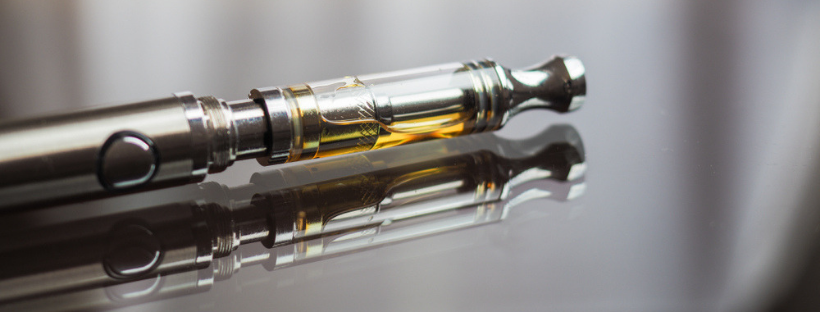
Why Would Vaping Cannabis Be More Potent than Smoking a Joint?
Previous studies referred to vaping as a more efficient way of delivering cannabinoids than smoking, so researchers aimed their efforts at investigating the impacts on several effects at two doses and comparing these results with both smoking the same doses and taking placebo doses of a THC-free product. The study lasted for six months.
The examined group included nine men and eight women with an average age of 27 who were first asked about their record with using cannabis and other psychoactive substances to confirm they all had been “clear” for an average of 13 months.
Comparing the results from 17 participants across vaping and smoking, researchers found statistically significant differences at a dose of 25 mg THC. With vaping, consumers felt more adverse effects or noticeable impairment in their psychomotor ability.
This could be due to the fact that vaporized cannabis contains more cannabinoids and terpenes. In addition to more THC in the vapor, the elevated terpene content amplifies the effects of cannabinoids, which is often referred to as the entourage effect.
Smoking cannabis, on the other hand, triggers combustion. The temperature gets so high that it destroys about 50% of the cannabinoid content when you light up a joint — the other 25% dissipates as you hold it between one puff and another.
What These Findings Mean for Consumers
The study we’ve just covered used cannabis that contained 13% THC, 0.03% CBD, and 0.8% CBN. This ratio of cannabinoids indicates a moderately psychedelic experience with some sedation and a higher risk of experiencing side effects such as anxiety due to the negligible levels of CBD.
People who want to hop on the bandwagon and try cannabis for the first time should err on the side of caution, as the majority of weed strains contains more than 15% THC — sometimes even up to 30%.
Given the potency of vaporized cannabis, smoking a joint could be a better option for novice consumers.
As for regular users with a high tolerance to THC, the results cannot be predicted due to a number of limitations.
For one, the study used only three doses of one cannabis strain. It also investigated the effects of a flower, leaving aside other cannabis formats like vape oils or concentrates.
Finally, the researchers only used a single vaporizer type — the Volcano Medic. This is a desktop unit that’s known for producing powerful hits of vapor, so we actually don’t know whether researchers could observe the same effects with a portable vaporizer.

Too Many Variables to Make Conclusive Claims
The research stated that more controlled studies are needed to determine whether vaping cannabis is more potent than smoking a joint. Such studies could also create dosing guidelines for each method, thus helping with making cannabis policies, regulations, and procedures for detecting the “intoxicating dose.”
In addition to the main conclusion, the authors of this study said, “We still don’t have a full look at the long-term effects of vaping, such as whether there is a risk for chronic bronchitis, and more work needs to be done on that front.”
Finally, the study confirmed one important thesis, namely that there are no strong correlations between the results and THC blood concentration.
According to Spindle, blood concentration levels can go back to standard levels before you stop experiencing the effects of cannabis. Collectively, the findings from this research paper and other studies have underlined (once again) that blood THC concentrations are not a reliable indicator of a person’s intoxication and impairment.
The study concluded that there’s a need to explore other biological and psychological means of detecting acute cannabis intoxication.
Is Vaping Cannabis Healthier than Smoking?
Whether vaping cannabis is more potent than smoking a joint is up for discussion, although the initial research confirms this thesis. As we said, the study had too many limitations to consider it conclusive.
But what about the impact of both methods on health?
Well, smoking weed — just as smoking anything, to be honest — isn’t the healthiest way to consume your herbs. Combustion produces tar and other dangerous byproducts. Whether you use a bubbler, joint, pipe, or percolator bong, you still rely on combustion.
While there hasn’t been many studies conducted on the effects of vaping cannabis, vaporizing nicotine is generally considered to be 95% safer than smoking tobacco according to top UK scientists. Given this, assuming similar outcomes with pot isn’t an exaggeration.
Nevertheless, there are still some well founded concerns about various vaporizing devices on the market. The problem applies to very cheap vaporizers that are typically manufactured in China. These units are made with inferior materials, with some parts being made of plastic.
We suggest that you stick to high-quality devices from reputable brands. Yes, they will be more expensive than your super cheap piece ordered from China, but consider it an investment in your experience and health.
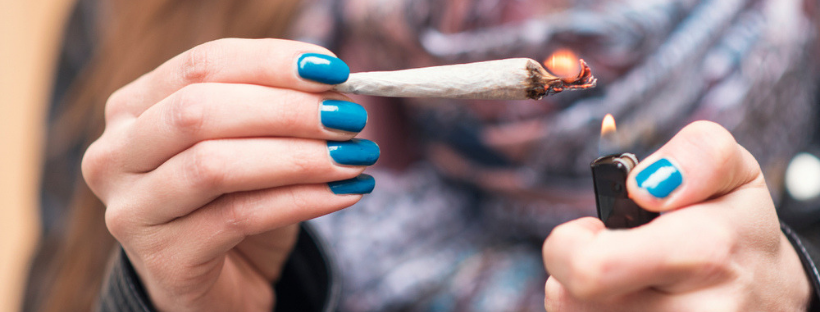
The Pros & Cons of Vaping Cannabis
As with anything in life, vaping has some obvious advantages, but it also has its downsides. Here’s a quick roundup of the pros and cons of vaporizing cannabis:
Pros:
- More complex flavor: vaping typically produces more complex aromas and flavors than smoking. You can revel in the individual terpenes and cannabinoid profiles of each variety more distinctly, whereas smoking destroys the majority of terpenes.
- Better control over heat: Most vaporizers allow you to adjust temperature settings to one degree. This gives you greater control over the temperature throughout the entire session. It may take some trial and error to figure out the best temperature to vaping your herb but it gives you access to a wider range of effects, from mellow and invigorating to a heavier and more euphoric experience.
- Efficiency: Vaporizing cannabis allows you to draw more cannabinoids from a single load. The bud that you’ve already vaped can be used to make edibles, beverages, or even as a last resort for smoking or vaping.
- No additional equipment required: Vaporizers operate on an internal heat source, so you’ll never need a lighter or matches for vaping your cannabis.
- Allows you to keep low profile: one of the best aspects of vaping cannabis is that your material smells a lot less than smoke, so if you’re trying to fly high under the radar, this consumption method is your best bet.
Cons:
- You need a grinder for the job: Most vaporizers won’t work with hand-broken weed because these devices are designed to heat finely ground herbs. This means that you’ll need a decent grinder to increase surface area and allow all of the cannabinoids and terpenes to be released from the plant more evenly.
- Vaporizers depend on batteries: While you don’t need a lighter for your vape to work, you certainly do need a battery for the job. If your device isn’t charged or near a power bank, then you need to postpone your session.
- Higher learning curve: Vaping cannabis requires you to learn how to handle your unit to get the most out of your experience with cannabis. It takes some trial and error to get the right grind, volume, and temperature.
- Maintenance: Vaping calls for a more consistent maintenance than smoking it. Keeping your vaporizer clean is of paramount importance for its performance. It’s essential that you thoroughly clean your vape after every few sessions.
- Higher initial cost: A decent vaporizer isn’t cheap. There are a few relatively inexpensive units out there, but a good vape starts upwards of $100. Luckily, vaporization saves you money in the long run because it offers greater efficiency and saves you money on the additional equipment.
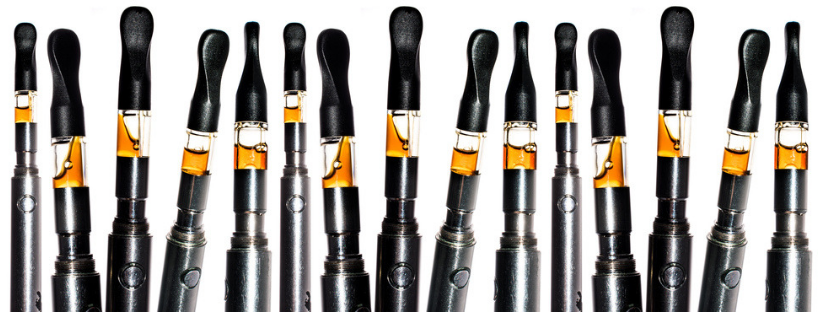
What’s the Best Vaping Temperature for the Most Potent Effects?
When you vaporize cannabis, you activate the THC so that it can produce its psychoactive effects. The boiling point of THC is 315, but if you really want to feel something, you want to heat up your herb to at least 325 F.
Lower temperatures are better for getting mild effects and drawing the best flavor from your bud. The taste is fresh, with detectable notes that are typical of each strain.
Low heat also means that the vapor will be cooler. This minimizes coughing because the vapor goes easily on your throat.
If you like to wake n’ bake, keeping your temperature between 325–350 F is what you want to aim for. It will produce invigorating effects with mild cerebral euphoria, which is also the best range for beginners.
More seasoned users, or those looking for moderate psychoactive effects, may try the 350–400 F range. You still save plenty of terpenes, although the bud will be slightly less flavorful than at lower temperatures. The vapor will be definitely warmer and thicker.
As more cannabinoids get activated at higher temperatures, this means the vapor will also be reacher.
The most potent psychoactive effects can be observed between 400–430 F. This range is the best for maximum cannabinoid extraction. The vapor will be hotter and carry less flavor, but you’ll also get the most of your strain’s THC content.
Those temperatures are best suited for evening sessions because they can induce sedation and sleepiness, leaving the user glued to the couch. They also activate the cannabinoid THCV and terpene humulene — both molecules are potent appetite suppressants and can prevent the munchies from kicking in.
Final Thoughts on the Potency of Vaporized vs. Smoked Cannabis
Recent studies indicate that vaporizing cannabis produces stronger psychoactive effects than smoking it. However, these studies come with certain limitations.
The study only tested fixed doses of the same cannabis strain and used the same temperature with a single vaporizer type. Vaporization is a complex process that involves too many variables to be considered unequivocally more potent than smoking a joint. Thus, we need more controlled trials in this subject to draw more accurate conclusions.
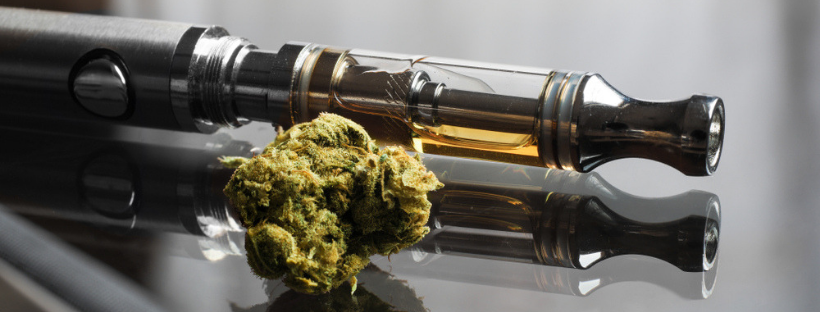
Whether vaporizing is better than smoking is a very subjective matter. Nevertheless, it goes without saying that vaporization offers you some serious perks that are unachievable with smoked weed.
Vaping is definitely more efficient and it offers you the entire terpene and cannabinoid profiles of your flower. Even when you operate on the highest temperature range of your unit, it still isn’t anywhere close to combustion. Given this, vaping is healthier than smoking.
If you don’t mind the slightly difficult learning curve, higher initial costs, and regular maintenance requirements, a vaporizer may prove a good companion — if not your best friend.
Do you also think that vaping cannabis is more potent than smoking a joint? Can you tell the difference in effects between using a desktop vaporizer and a portable unit?
Let us know in the comments below!


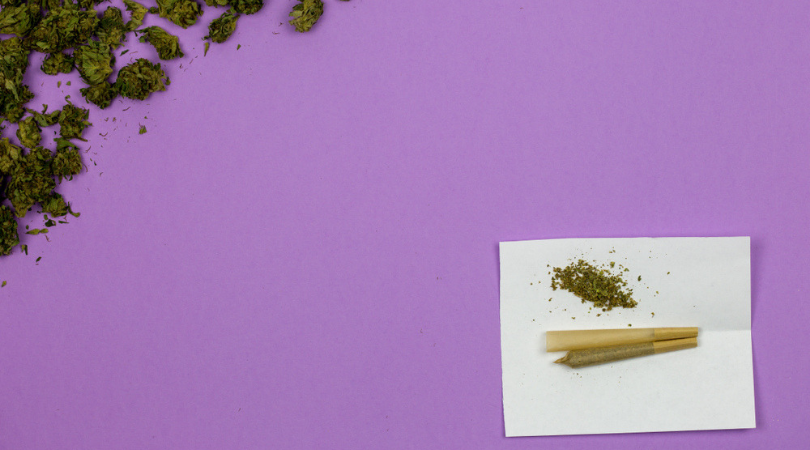
One thought on “Which Is More Potent, Vaping Cannabis or Smoking a Joint?”